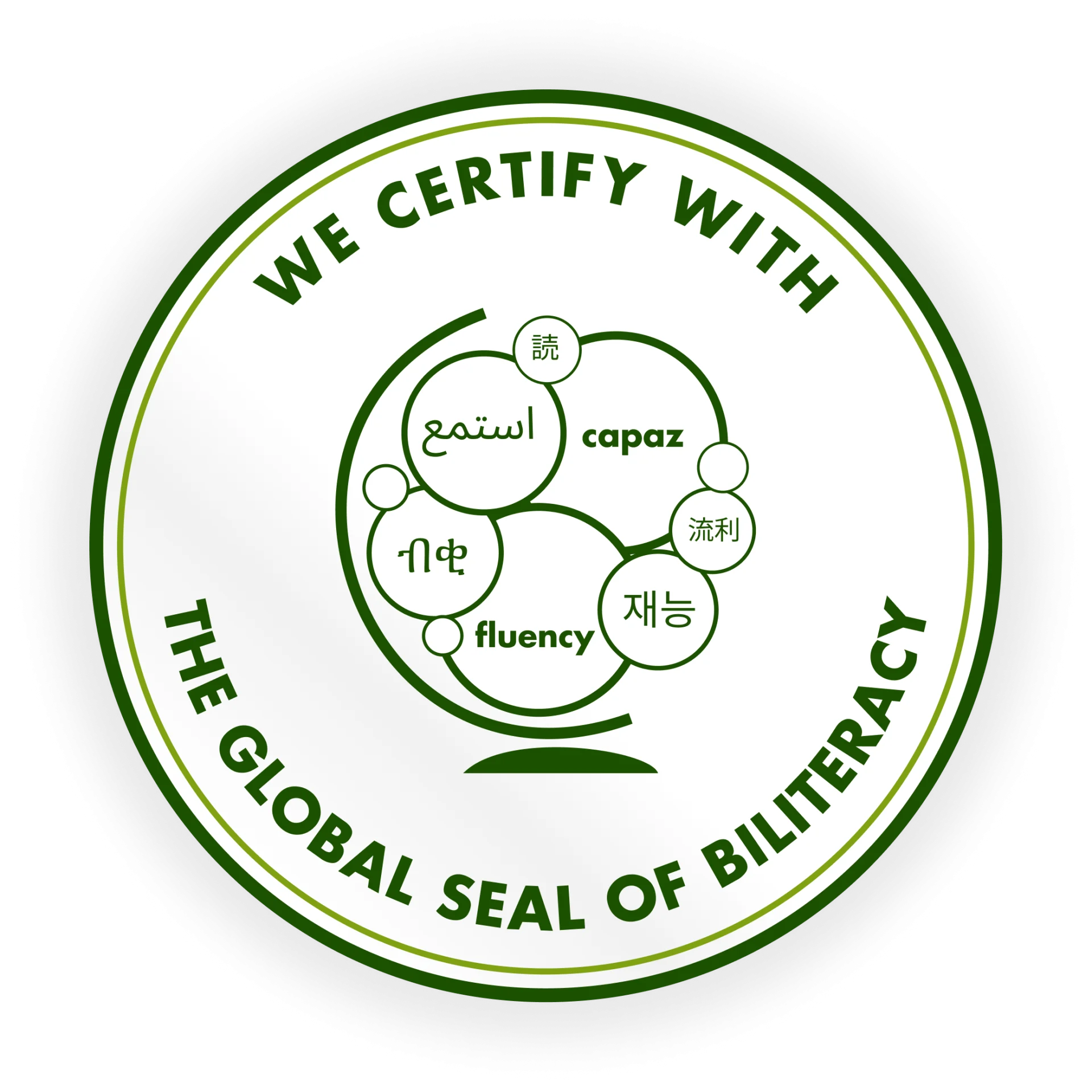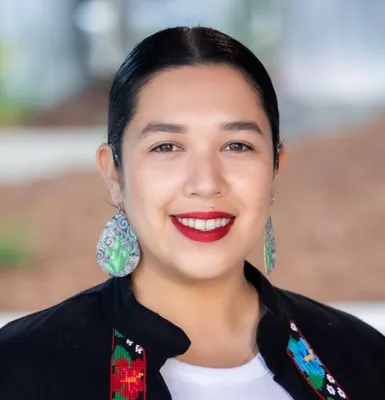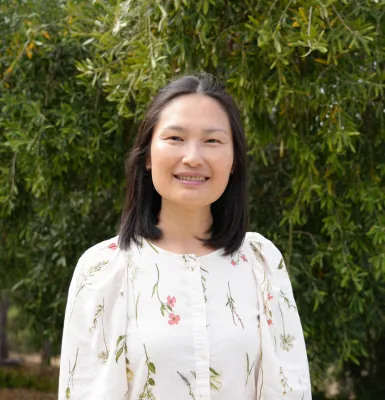World Languages
York’s World Languages programs develop communicators, linguists, and aficionados of world cultures both past and present. We value training students to understand how languages work but emphasize language as a communicative tool in performing interpretive, presentational, and interpersonal tasks. Such skills are not, however, gained in a vacuum of language study. To communicate effectively, our students also gain insight into and appreciation for the cultures of the people who speak Mandarin Chinese and Spanish. A York World Language graduate will learn to communicate in cultures that offer surprising differences and share striking similarities to their own cultures.
The York World Language requirement allows students to choose among Mandarin Chinese or Spanish and complete three years in Grades 9-12, including at least the third level of one of these languages. By means of our interactive programs, students are immersed in the language and are engaged in using it in meaningful, authentic real-world contexts, where grammar and vocabulary are acquired with the goal of achieving proficiency in communication.
Requirements. In Grades 9-12, students are required to complete three years of a world language, either Mandarin Chinese or Spanish, through at least level III of that language.
World Language honor societies
York School offers students the opportunity to join a World Language Honor Society in recognition of their dedication to language learning and global citizenship. These societies celebrate academic excellence, promote cultural understanding, and inspire students to become active, engaged members of the global community.
The National Chinese Honor Society (NCHS) honors students who excel in Chinese language studies while demonstrating leadership, citizenship, and community service. NCHS encourages its members to become lifelong learners, deepening their understanding of Chinese language and culture while contributing meaningfully as global citizens in the twenty-first century.
The Sociedad Honoraria Hispánica (SHH), sponsored by the American Association of Teachers of Spanish and Portuguese, recognizes high school achievement in Spanish and Portuguese and promotes interest in Hispanic and Luso-Brazilian cultures. The SHH provides opportunities for students to further explore language and culture while serving their community.
Students interested in joining an honor society must meet the eligibility requirements set by the national organizations and the York School World Languages Department. Members of these honor societies will also receive a special cord to wear at graduation. For more information, please contact World Language Department Chair, Heather Danishanko, at hdanishanko@york.org.
Global seal of bilITERACY
 We certify with the Global Seal of Biliteracy
We certify with the Global Seal of Biliteracy
Awarded in more than 50 countries, the Global Seal of Biliteracy is a verifiable international certification that conveys proficiency with language skills in two or more languages for our qualifying candidates. This stackable certification offers a competitive advantage by empowering bilinguals with digitally shareable documentation that opens the door to scholarships, advanced course placement, increased study abroad opportunities and so much more. The Global Seal is and will be FREE for all.
To learn more about the Global Seal of Biliteracy, visit their website at www.theglobalseal.com.
Courses Available
Mandarin I introduces the fundamentals of Mandarin Chinese by exploring familiar topics such as self, family, hobbies, school, and sports. Students will develop basic skills in listening, speaking, reading, and writing through interactive classroom activities, with a strong focus on establishing a solid foundation in Mandarin tones and Chinese characters. While students will be introduced to Chinese keyboarding using pinyin, writing simplified characters legibly will be expected throughout the year. The course also offers insights into culturally significant topics such as Chinese names and family dynamics.
Mandarin II builds on foundational language skills through engaging games and interactive communicative tasks set in real-world contexts. Students will learn to express and inquire about basic needs and feelings, agree or disagree, state opinions with supporting reasons, and compare and contrast different ideas. A strong emphasis is placed on developing Chinese orthographic awareness through the systematic acquisition of recurring character components. Additionally, students will explore Chinese culture in depth, covering topics such as holiday and birthday celebrations, traditional foods and their symbolism, and traditional Chinese musical instruments.
Mandarin III builds on the core skills acquired in previous levels, further enhancing students’ interactional competence through communicative activities and multimedia resources. As their linguistic repertoire expands, students will gain greater ability to engage in everyday conversations, express needs and opinions, discuss personal interests, and complete paragraph-length writing assignments. The course also incorporates in-depth cultural discussions on various aspects of student life in China, encouraging students to compare and contrast these experiences with their own, on topics such as health and fitness, academic support, extracurricular activities, and strategies for learning Chinese beyond the classroom.
While Mandarin III Honors covers linguistic and cultural topics in greater depth, its scope is also much broader and includes numerous abstract and challenging enrichment topics. As a result, Mandarin III Honors is intended for students who have a strong interest and aptitude for language learning, and who are ready, willing, and able to do the work necessary to tackle demanding communicative tasks at an accelerated pace.
Mandarin IV aims to enhance students' ability to communicate spontaneously and effectively in real-world situations, with a focus on cultural appropriateness. Students will expand their vocabulary and discourse strategies, allowing them to articulate opinions on a wide range of topics, including connecting with friends, planning events, exploring traditional performing arts, and discussing the impact of technology on Chinese society. Through interactive learning activities, guided discussions, and collaborative projects, students will further develop their Mandarin fluency while gaining a deeper understanding of both Chinese culture and their own.
While Mandarin IV-YAS covers linguistic and cultural topics in greater depth, its scope is also much broader and includes numerous abstract and challenging enrichment topics. As a result, Mandarin IV-YAS is intended for students who have a strong interest and aptitude for language learning, and who are ready, willing, and able to do the work necessary to tackle demanding communicative tasks at an accelerated pace.
Mandarin V is aimed to enhance students’ communicative competence and prepare them to function more confidently in the Mandarin-speaking world. The course covers various social, political, and environmental topics, and is supplemented with short stories, news, videos, films, and other authentic materials to help students gain a better understanding of colloquial and idiomatic expressions. They will further strengthen communication and language learning strategies, such as inferring meaning through sociocultural context or linguistic features. Through discussions, presentations, and other cooperative learning activities, students will have multiple opportunities to apply their language skills with greater fluency and accuracy.
Spanish I offers an immersive, input-rich approach to language learning, focusing on both language acquisition and cultural understanding. Using the SOMOS curriculum and the TPRS (Teaching Proficiency through Reading and Storytelling) method, students are introduced to Spanish in a way that emphasizes communication from Day 1. Using comprehension-based instruction, this course teaches language and culture simultaneously, allowing students to develop their proficiency in listening, speaking, reading, and writing while gaining a deep appreciation for the diverse cultures of the Spanish-speaking world. By the end of the course, students will have the tools to communicate confidently in Spanish and a rich understanding of the cultures that shape the language. The proficiency goal for students to achieve by the end of the year is Novice High.
Spanish II offers an immersive, input-rich approach that emphasizes both language acquisition and cultural exploration. Using the SOMOS curriculum and the TPRS (Teaching Proficiency through Reading and Storytelling) method, students deepen their understanding of Spanish while expanding their ability to communicate more effectively. With a solid grasp of basic vocabulary and structures, students in this course are ready to tackle more complex themes and concepts affecting the Spanish-speaking world. Students will engage with a variety of topics, allowing them to express opinions, explore cultural issues, and navigate more advanced conversations. A key component of Spanish II is the introduction of reading novels in Spanish, which enhances comprehension skills and allows students to see language in context. This also provides further opportunities to develop cultural insight by reading authentic, culturally relevant literature. By the end of the course, students will have strengthened their abilities in listening, speaking, reading, and writing, moving toward a higher level of proficiency. With a deeper appreciation of Spanish language and culture, students will be able to engage more confidently in real-world conversations and explore the richness of the Spanish-speaking world on a broader scale. The proficiency goal for students to achieve by the end of the year is Intermediate Low.
Spanish III is an intermediate-level course conducted predominantly in Spanish (95%), designed to enhance proficiency across interpersonal, interpretive, and presentational communication modes within a blended-level setting. The course fosters mastery of vocabulary, grammar, listening, reading, and communication skills, while offering extensive exploration of Spanish and Hispanic cultures through history, literature, art, music, and contemporary events. Students delve into the interplay between language and society, addressing cultural themes such as race, social justice, migration, and globalization. The course also examines the impact of region, social status, and ethnicity on language use, exploring language variation and change. Through a content and task-based approach, students engage with primary sources from literature, history, politics, art, and media, refining their written and oral skills through discussions, compositions, presentations, and research projects in Spanish. The proficiency goal is for students to achieve an Intermediate Low/Mid level by the end of the year, equipping them for meaningful encounters with Spanish-speaking cultures in various contexts.
Spanish III Honors is a high intermediate-level course conducted predominantly in Spanish (95%), designed to challenge students with a deeper engagement in interpersonal, interpretive, and presentational communication modes. The course fosters advanced proficiency in vocabulary, grammar, listening, reading, and communication skills, while providing an in-depth exploration of Spanish and Hispanic cultures through history, literature, art, music, and contemporary events. Students delve into the intricate interplay between language and society, critically examining cultural themes such as race, social justice, migration, and globalization. The course also explores the impact of region, social status, and ethnicity on language use, with a focus on language variation and change.
Spanish III Honors is distinguished by its rigorous assignments and elevated performance expectations, requiring students to engage more intensively with primary sources from literature, history, politics, art, and media. Written and oral skills are honed through demanding discussions, compositions, presentations, and research projects, all conducted in Spanish. The proficiency goal for the year is to achieve an Intermediate Mid level, equipping students with the linguistic and cultural competence necessary for meaningful encounters with Spanish-speaking communities in diverse contexts.
This is an intermediate/advanced, communicative course based on a series of documentaries about the Spanish-speaking world. The four fundamental skills of reading, writing, speaking and aural comprehension are developed with a balanced approach. This course is based on the curriculum laid out in the textbook El cine documental. The Spanish IV curriculum reviews and elaborates upon various grammatical structures from previous years, and offers multiple opportunities to apply them in written and verbal exchanges. By the end of Spanish IV, students will be able to write and talk about various social, political, historical, and cultural topics and present their points of view in the target language.
While Spanish IV-YAS covers linguistic and cultural topics in greater depth, its scope is also much broader and includes numerous abstract and challenging enrichment topics. As a result, Spanish IV-YAS is intended for students who have a strong interest and aptitude for language learning, and who are ready, willing, and able to do the work necessary to tackle demanding communication tasks at an accelerated pace.
The Spanish Seminar rotation (A, B, and C) offers advanced Spanish learners the opportunity to explore thematic content in-depth through literature, film, cultural studies, and sociolinguistics. Designed for advanced Spanish students, each year-long seminar focuses on a distinct theme. Seminar A: Lengua, cultura y sociedad a través de la literatura, cine y teatro investigates cultural identity and historical legacies in Latin America through a project-based curriculum. Seminar B: Conflictos personales y relacionales examines psychological, social, and emotional dynamics of identity and relationships across cultures. Seminar C: Sociolingüística hispánica provides students with a comprehensive introduction to the diversity and variation of the Spanish language, grounded in linguistic theory and sociocultural analysis. Each seminar emphasizes interpersonal, interpretive, and presentational modes of communication while fostering learner agency, creativity, and academic inquiry. Themes rotate yearly. Students may take one or more seminars in any order.
The AP Spanish Language and Culture course focuses on effective communication, emphasizing the ability to understand and be understood in real-world situations. Students develop interpersonal, interpretive, and presentational skills through meaningful interactions, incorporating vocabulary, language control, communication strategies, and cultural awareness. While grammatical accuracy is important, the course prioritizes communication over rote memorization of rules.
Students will explore Spanish-speaking cultures in both contemporary and historical contexts, gaining a deeper appreciation for cultural products (such as literature, music, laws, and institutions), practices (social customs and traditions), and perspectives (values, attitudes, and beliefs). The course is structured around six key themes: families and communities, personal and public identities, beauty and aesthetics, science and technology, contemporary life, and global challenges. At the end of the course, students will take the AP exam, providing an opportunity to earn college credit.
Faculty

Jenny Nadaner
FacultyYORK SCHOLARS DIRECTOR; WORLD LANGUAGES; ACADEMIC PARTNERSHIPS; CIEE COORDINATOR ; ED TECH SPECIALIST




